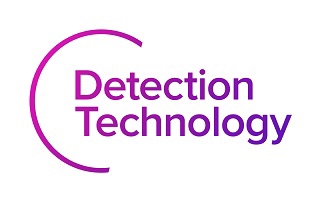Detection Technology complements its standard medical CT offering with X-ACE 16 HD

Detection Technology, a global leader in X-ray detector solutions, today announced X-ACE 16 HD (high-definition) as an addition to its unique standard medical CT (computed tomography) detector offering. The plug-and-play type X-ACE 16 HD is available as stand-alone detector boards, and alternatively as a complete subsystem like previously launched members of the product family, X-ACE 16 and X-ACE 32.
The X-ACE subsystem includes ready-made detector modules, an X-DCB2 data combiner board and adapter, software libraries, and all the necessary accessories. The investment-free sub-system brings notable total cost savings and speeds up the time-to-market of advanced CT systems in the highly competitive value and mainstream segments.
“Demand and excellent customer feedback are driving us to further strengthen our position as a leader in standard medical CT detectors. We are a pioneer in this field, and so far we are the only one in the market to enable one-stop shopping, even for medical CT. In the future, we aim to also be a forerunner in static and photon-counting CT solutions, and to provide standard solutions for these applications as well,” says Tuomas Holma, Director of Product Management in the Medical Business Unit.
“We have available standard solutions for all medical CT imaging modalities, from the value to the premium segment. With the off-the-shelf X-ACE portfolio together with X-Tile, introducing CT system configurations from 16 up to 256 slices is rapid and cost-efficient, yet image quality meets the most stringent medical standards and regulation.”
When comparing the previously introduced X-ACE 16 and the high-definition version, X-ACE HD enables two times higher resolution. In addition, it provides flexibility on the mode selection as it can be run either by using 0.625 or 1.250 isocenter resolution. Based on the selected mode, anatomical coverage at the isocenter will be either 10 or 20 mm.
The X-ACE detector boards are built on a well-proven and modular platform. The platform features the highest level of integration, as a scintillator, a photodiode, analog-to-digital converters (ADC), and a field-programmable gate array (FPGA) are assembled to a single printed circuit board (PCB).
“In terms of benefits, this means cost-optimized and simplified system designs, straightforward integration, minimized risks, a streamlined supply chain, and detector solutions that are mechanically more robust and digitally enhanced. Furthermore, the X-ACE series provides high image quality with low doses at fast scanning speeds for enhanced patient safety and experience.”
High-speed data collection from the X-ACE detector boards is enabled by the X-DCB2 data combiner board. An associated adapter board is provided for slip ring-based systems. The X-ACE detector subsystem has an optical datalink from the X-DCB2 to the host computer.
To facilitate and accelerate the system design phase and detector integration, Detection Technology provides global engineering support and a customer evaluation unit. Support inquiries can be directed to the company.
The company will be showcasing X-ACE 16 HD, and its earlier introduced standard medical CT solutions, X-ACE 16, X-ACE 32, and X-Tile, at the RSNA exhibition. The show will be held in Chicago starting on November 27, 2022.






